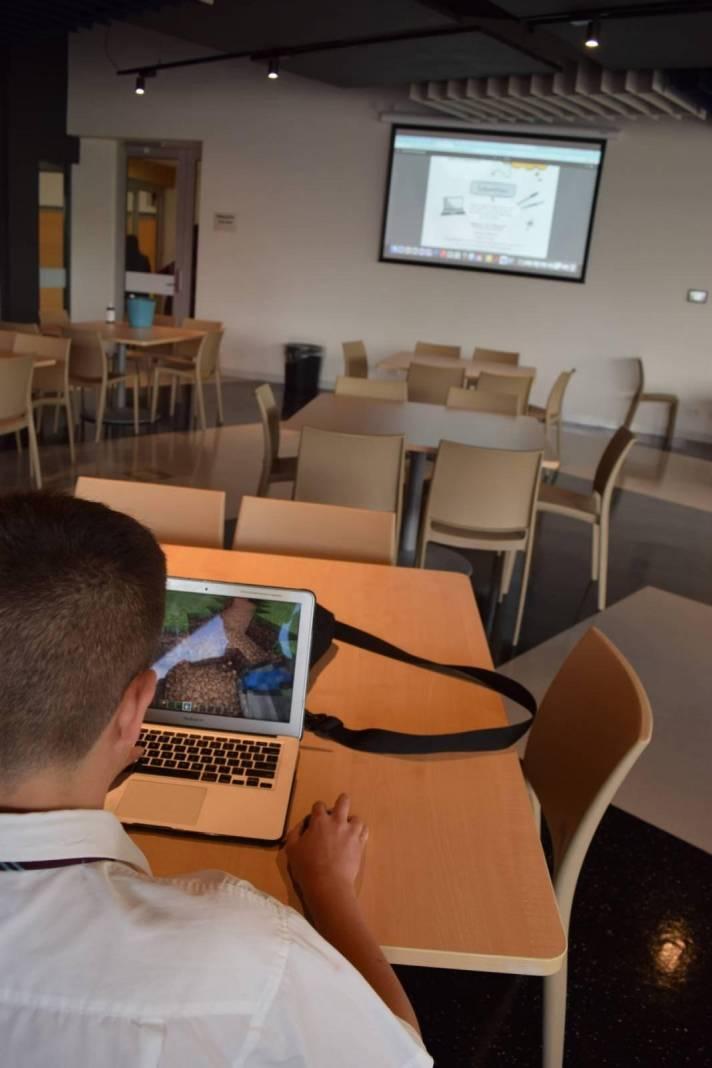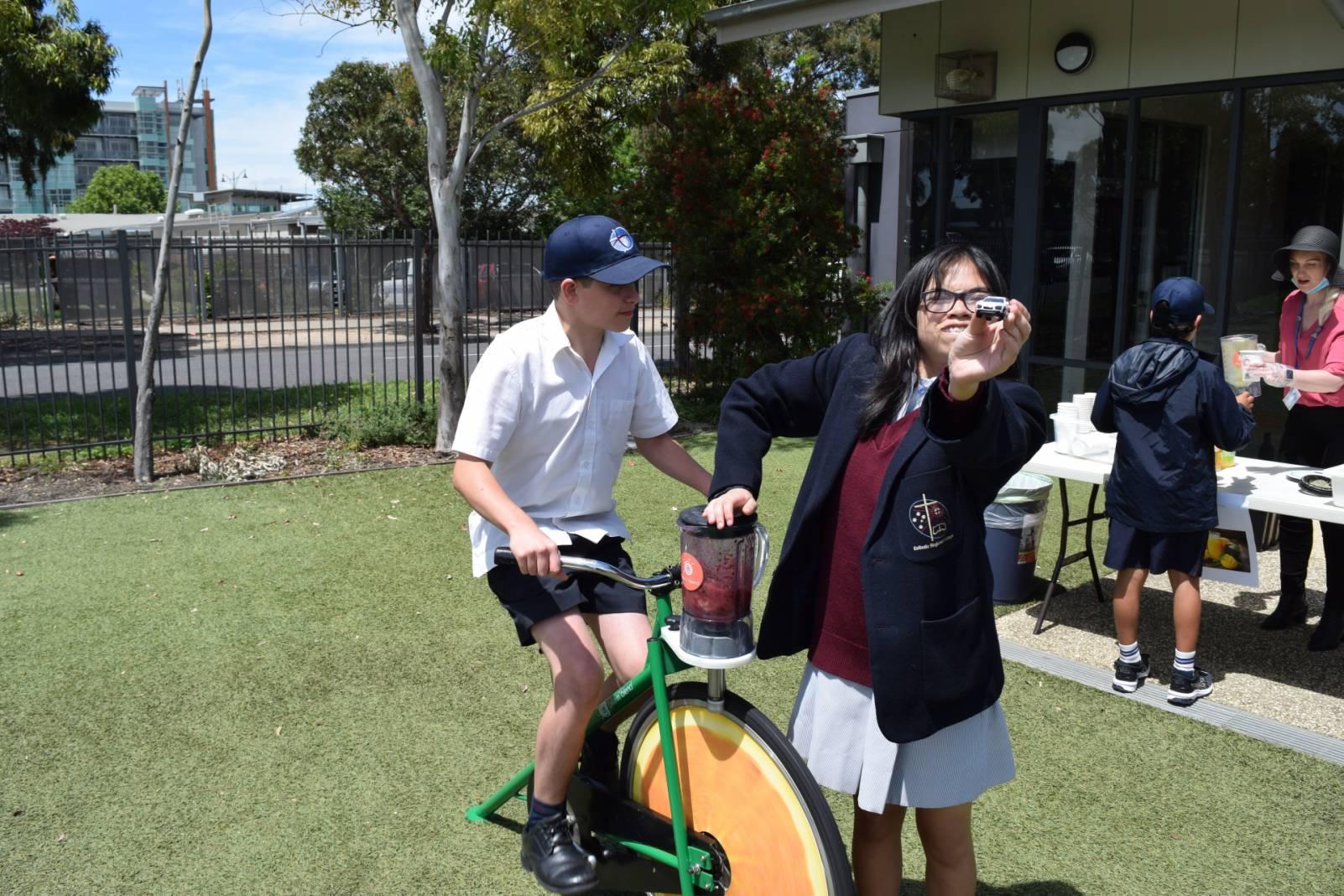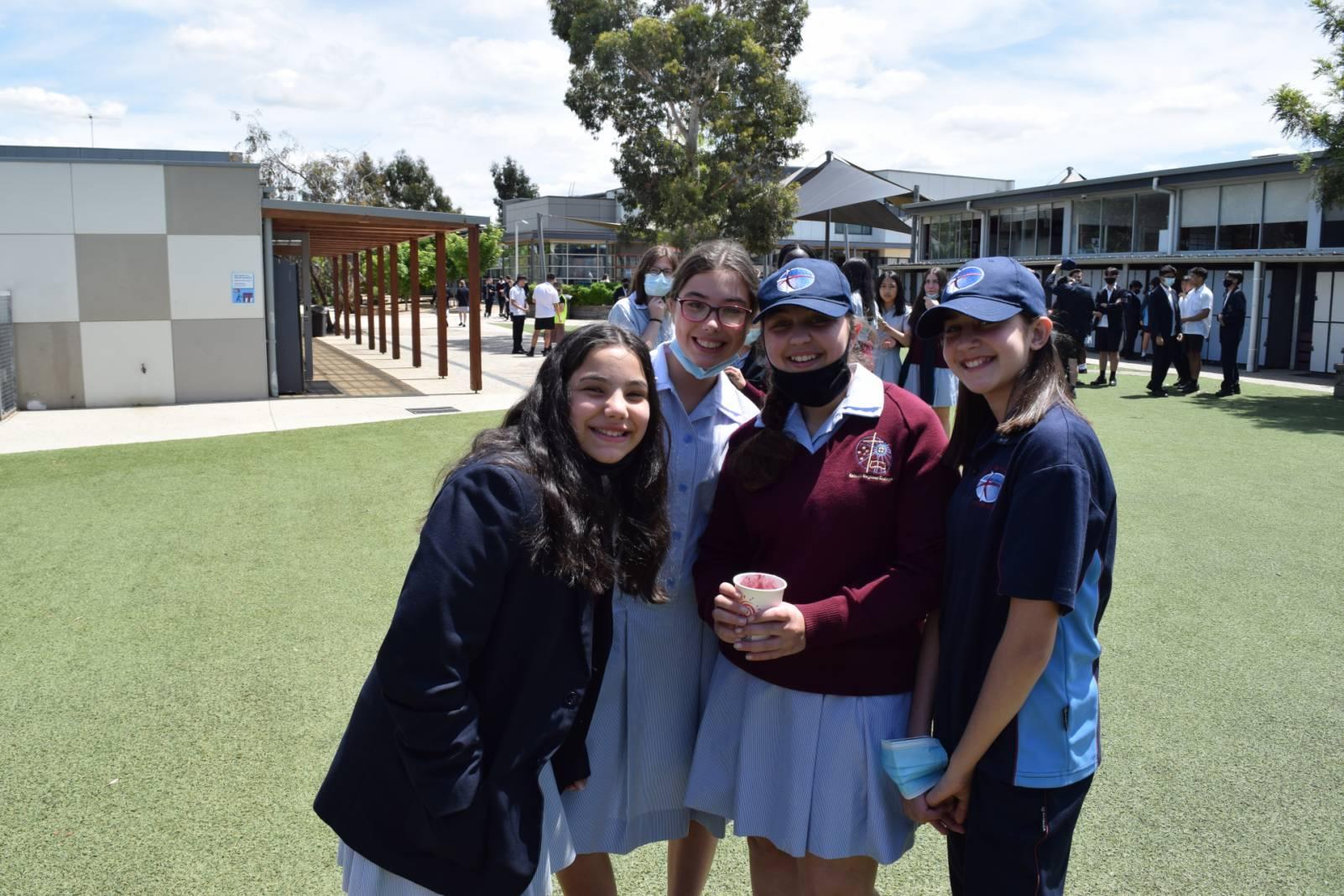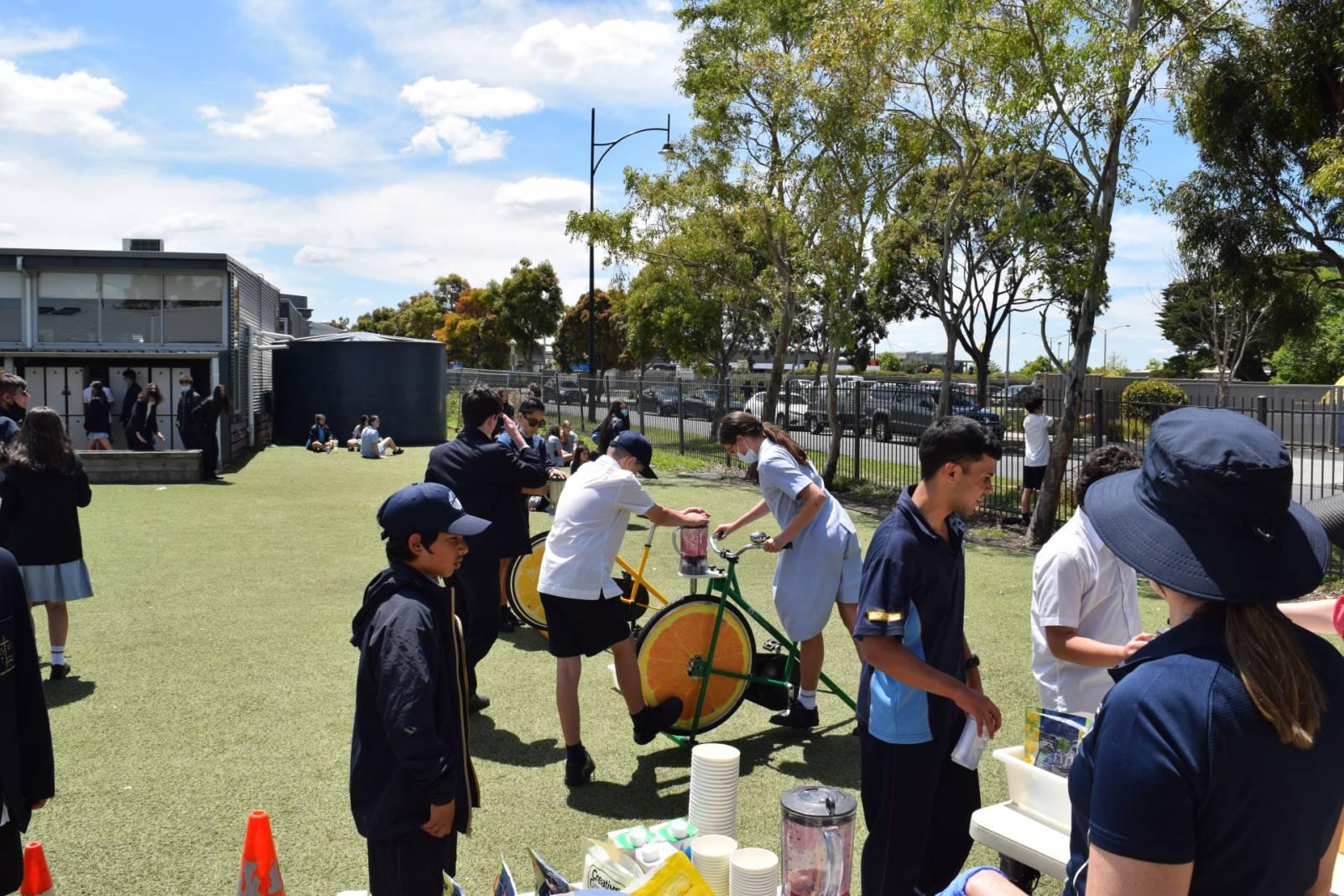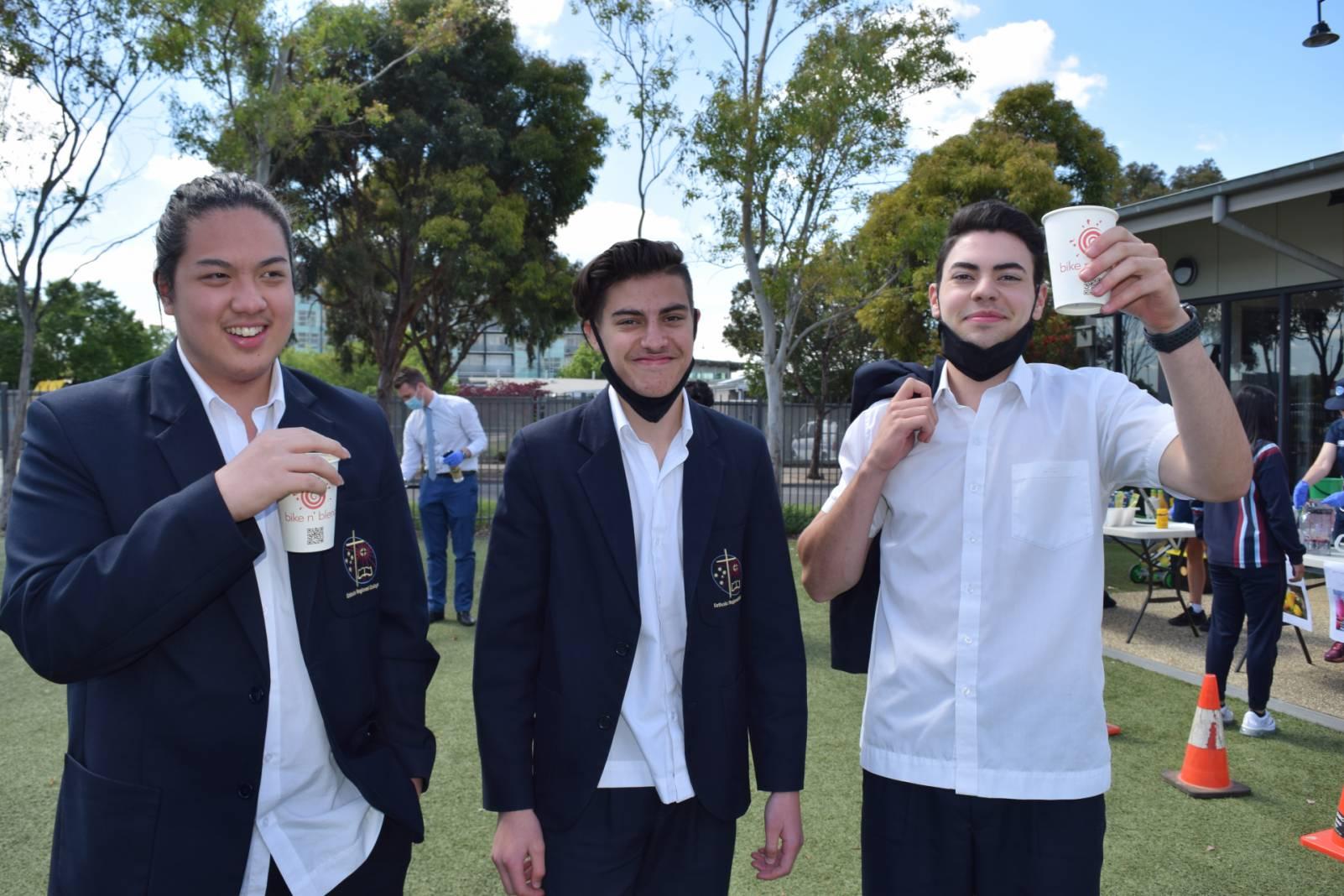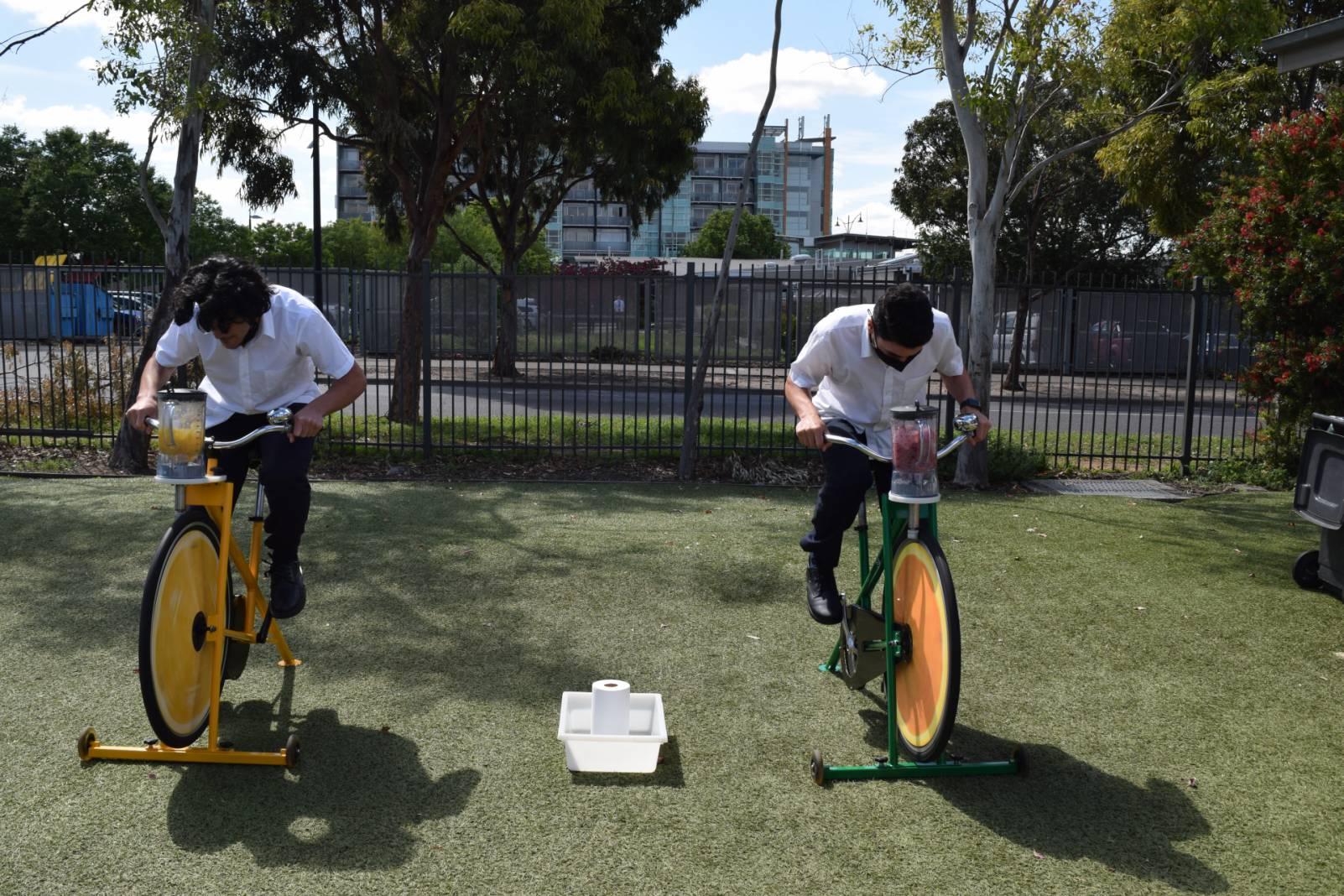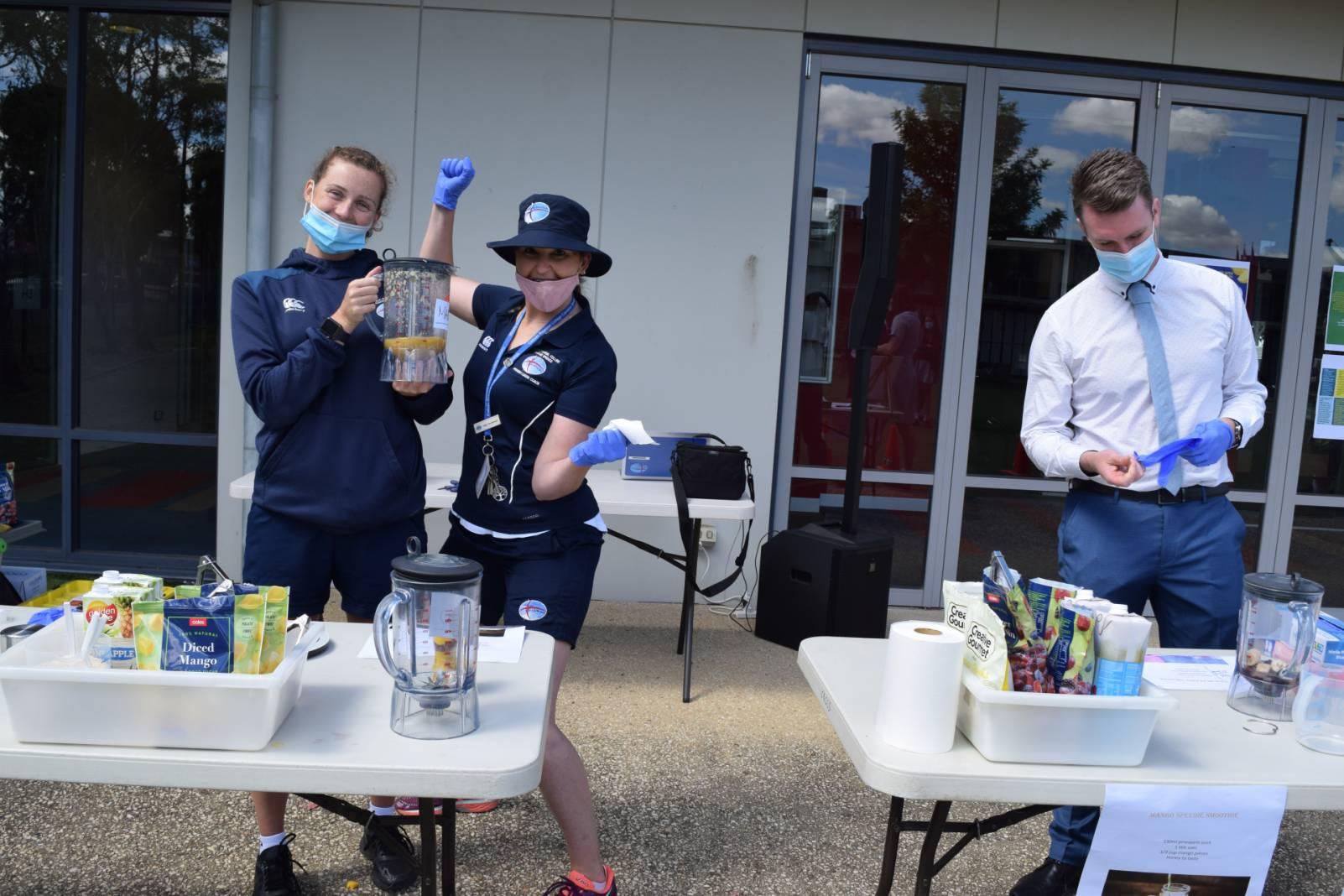This year for National Science Week, our College community celebrates the theme of 'Food by a different design.' Students throughout this week provided an opportunity to be involved in investigating, exploring, experimenting, designing, creating, and communicating their understandings about how science is involved in food production and sustainable agriculture.
Some of the activities were sustainable Minecraft world and Bike n' Blend, looking at bicycle energy harvesting and the two major methodologies in the various practical and theoretical attempts to harvest the kinetic energy of a bicycle. The first and perhaps more obvious of the two is collecting the energy from the rotational motion of the wheels. This kind of device would operate on a simple principle: the rotational force of peddling the bike causes the wheels to spin, this spins a rotor that spins a generator, ultimately producing electricity which is then stored in a battery.
Here are a few facts to ponder about...
When scientists modify plants and other organisms that we eat, they become genetically modified (GM) food. Scientists are looking for a range of traits that can help improve our foods. These include:
- the ability to grow in hot or dry conditions
- resistance to pests and pesticides
- the ability to produce more food
- the ability to capture more CO2
- improved nutritional value
- improved taste or juiciness
One-third of all food produced is lost or wasted (around 1.3 billion tonnes of food), costing the global economy close to $940 billion each year.
Eliminating global food waste would save 4.4 million tonnes of C02 a year, the equivalent of taking one in four cars off the road.
The top 5 most wasted foods in Australia are vegetables, bread, fruit, bagged salad, and leftovers.

